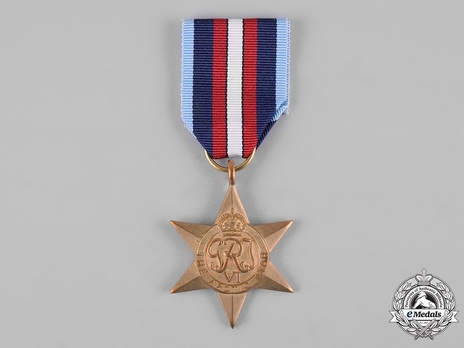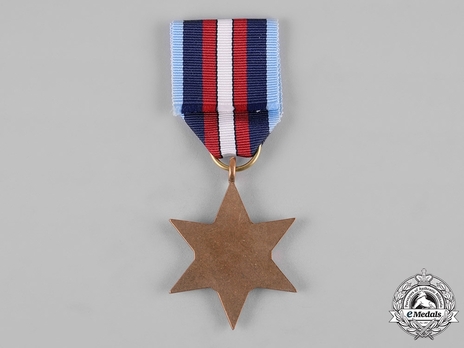Arctic Star
SKU: 02.GBR.0251.101.01
Estimated market value:


Estimated market value:
Attributes
History
The Arctic Star is a military campaign medal instituted by the United Kingdom on December 19, 2012 for award to British Commonwealth forces who served on the Arctic Convoys north of the Arctic Circle, during the Second World War. The Arctic Star is a retrospective award, announced in late 2012, nearly seven decades after the end of the Second World War. It was formally approved by the Queen for award to those who served on the Arctic Convoys during the Second World War, and production began in early 2013. The institution of the medal, along with the Bomber Command Clasp, was the end result of a sixteen-year-long campaign by Commander Eddie Grenfell, Lieutenant Commander Dick Dykes and Merchant Navy veteran Jock Dempster, who stressed that service in the arctic convoys north of the Arctic Circle was entirely different from that in the Atlantic, for which the Atlantic Star had been awarded, with different aims and different conditions which had been described by Winston Churchill as "the worst journey in the world".
The Arctic Star has been controversial, since it is the first British medal to be instituted and awarded using a dead monarch's cypher or effigy, and who did not give permission for it to be instituted. The medal has also been criticized by other groups, who maintain that the veterans of the convoys had already been amply rewarded with medals for this campaign, and they should not have received special treatment over other veterans who have been denied similar recognition.The medal was awarded for any length of operational service north of the Arctic Circle by members of the British Armed Forces and the Merchant Navy. The qualifying area is defined as 66° 32’ North Latitude and the qualifying period recognizes the particular severity of the conditions experienced by those who served in the Arctic. The inclusive qualifying period of service is September 3, 1939 to May 8, 1945, the duration of the Second World War in Europe. Though the Arctic Star is intended to recognize the service of personnel in the Arctic convoys of the Second World War, other members of the military and civilians may also qualify. Eligibility is defined as follows: Royal Navy and Merchant Navy personnel must have served anywhere at sea north of the Arctic Circle. This includes, but is not limited exclusively to, those ships which participated in, and in support of convoys to North Russia. Fleet Air Arm personnel who did not qualify by sea service may qualify under the criteria applicable to Royal Air Force personnel; Air crew of the Air Forces are eligible if they landed north of the Arctic Circle or served in the air over this area. Non-air crew who performed operational service in the area, for example ground crew or those who sailed with Catapult Aircraft Merchant Ships, are also eligible; Army personnel who served on His Majesty’s ships or in defensively equipped merchant ships qualify under the rules applying to the Navy or Merchant Navy. Personnel who took part in land operations north of the Arctic Circle are also eligible for award; Civilian Members of the few approved categories who qualify for Campaign Stars will be eligible so long as they met any qualifying criteria while they served in support of military operations; and Foreign nationals who served in British or Dominion Forces, such as the Royal Canadian Navy and Royal Australian Navy, are eligible for the Arctic Star so long as the individuals have not been recognized by a similar award from their own governments. Eligibility for the Arctic Star does not affect an individual's eligibility for any other previously awarded campaign medals, nor does it automatically entitle individuals to any further awards.

Versions
$320 USD
Bronze
Obv: THE ARCTIC STAR
38x44mm


Comments
Sign in to comment and reply.


Scroll Top